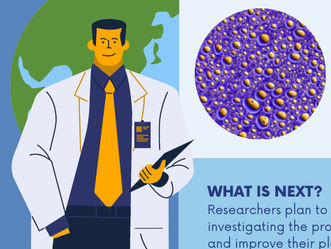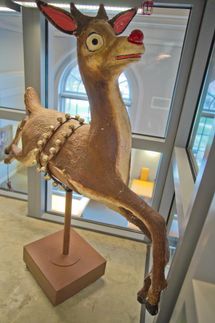Insects drive rapid shifts in plant ecology and evolution
A five-year study of plant populations provides rare real-time data that demonstrate key predictions by Charles Darwin on the importance of ecology along with natural selection in shaping a species' evolution.
When insect pests were removed from experimental fields of evening primrose, a native wildflower, the plants evolved - in just three to four generations - to relax their defenses against pests and were also better able to compete for space and other resources against dandelions that unexpectedly thrived without insects.
"What was most surprising to us was how rapidly the plants evolved, and we did not expect the evolution of competitive ability in the plants," said Anurag Agrawal, a Cornell professor of ecology and evolutionary biology and lead author of the study published Oct. 5 in the journal Science.
In the study, which began in 2007, Agrawal, Amy Hastings, a research support specialist working in Agrawal's lab, and colleagues set up 16 identical plots that contained the same relative numbers of 18 unique genotypes (specific genetic make-ups) of native evening primrose (Oenethera biennis). During each growing season, half the plots were treated biweekly with an insecticide; the other half were controls.
The offspring of evening primrose are mostly clones of the parent due to self-pollination and other factors in primrose reproduction. This genetic stability allowed the researchers to track the frequencies of the 18 different genotypes in the plots over five generations.
In Ithaca, the evening primrose has three native moth pests that eat the plant's fruits and seeds; one species (Mompha brevivittella) was more than five times more prevalent at the site than the other two.
Between 2007 and 2011, the researchers found that the number of evening primrose plants decreased substantially in plots without insects when compared with control plots, but dandelions thrived and out-competed many of the genotypes of evening primrose, possibly by shadowing light needed for germination and early seedling survival.
"The plots where we took insects out had double the dandelions," Agrawal said. Dandelion pests included a specialist beetle and a generalist moth caterpillar that preferred dandelions over evening primroses.
Whereas the genetic structure of the evening primrose populations changed over time, the researchers found that only nine of the original 18 genotypes in significant numbers remained in both insect-suppressed plots and the controls.
Of the genotypes that remained in the plots without insects, the researchers found more plants with relaxed defenses. By 2010 and even more in 2011, there was a shift toward plants that flowered earlier. When insects are present, later-flowering plants do better due to the timing of insect development, where larvae tend to eat the fruits of early flowering plants. Also, over time, there was a shift toward primroses with lower amounts of insect-deterring chemicals in the fruits, suggesting that in the wild, selection had been strongest for defense against flower and fruit eating insects, such as M. brevivittella.
Finally, without insects, primroses were better able to compete against dandelions -- primrose genotypes that led to larger plants were favored when compared to the controls.
"The effects of insect pests can have immediate consequences for plant health and also sweeping consequences for evolution of entire communities," Agrawal said.
Agrawal and his colleagues intend to maintain the experimental evolution plots as a long-term living laboratory to decipher the complexities of ecology and evolution.























































